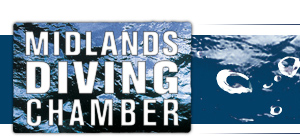
Halley, born of a wealthy soapboiler in Haggerston, London studied at St. Paul's School before graduating from Queens College, Oxford. Whilst still an
undergraduate, he published his papers on the solar system and sunspots. Further study whilst in St. Helena led him to publish two papers, the first
"Catalogus Stellarum Australium" included details of 341 stars; the second, published in 1686, concerned trade winds, monsoons and established the
relationship between barometric pressure and height above sea level.
In 1690, Halley developed plans for a diving bell, in which the atmosphere was replenished by way of weighted barrels of air sent down from the surface.
In a demonstration of his apparatus, Halley and five companions dived to 60feet in the River Thames, and remained there for over one and a half hours.
Halley's bell was likely to be very heavy and possibly of little use for actual salvage work, although he did make improvements to his bell over time,
later extending his underwater exposure time to over 4 hours.
Halley, of course later went on to have a comet named after him after famously predicting the return of a comet previously seen in 1456, 1531, 1607 and
1682. The comet returned in 1758 and has since been known as Halley's Comet.
Henshaw and 'The Domicilium' » |



